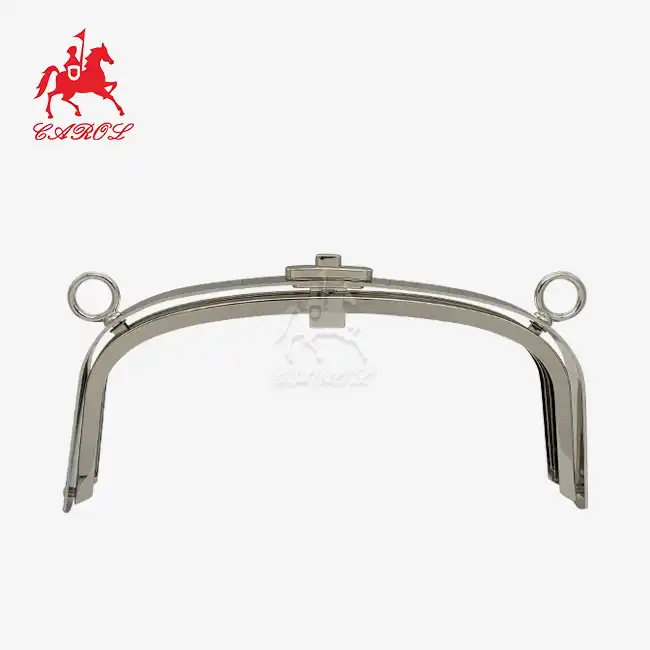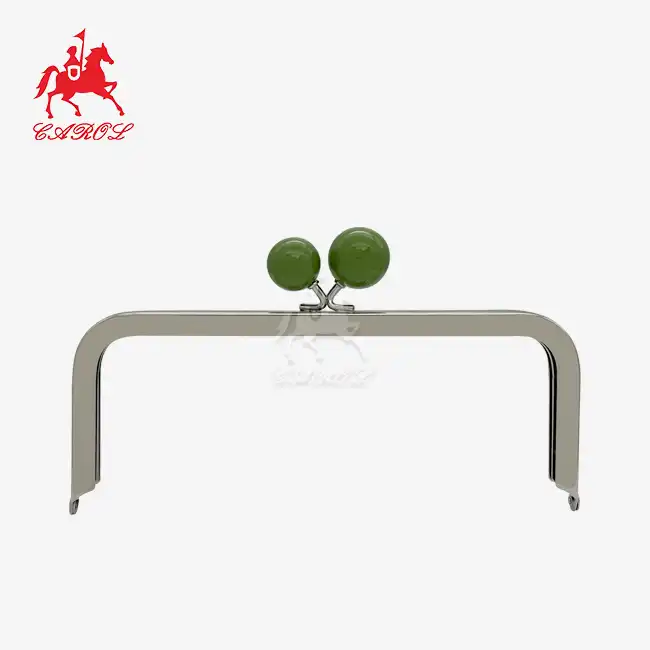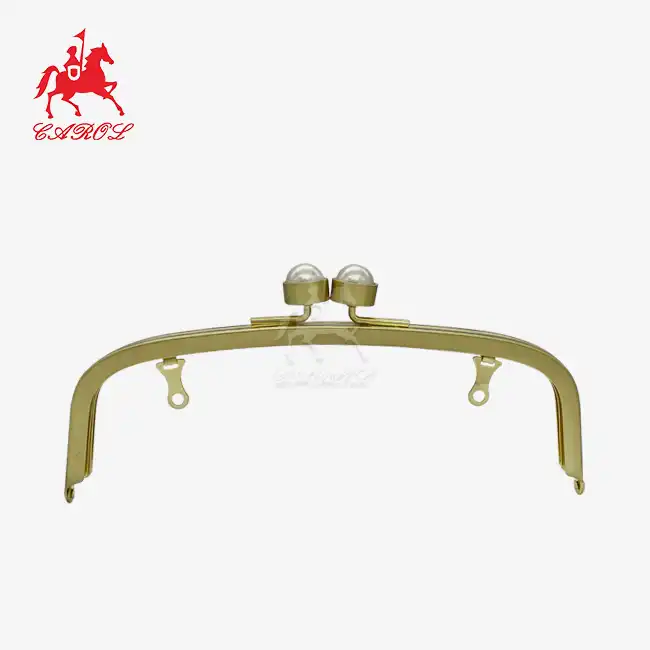Which is better, spring ring or lobster clasp?
When crafting or selecting accessories for straps, bags, belting, leathercraft, key chains, and ID card hooks, the choice of clasp is far from trivial. A clasp is not just a functional component; it dictates the accessory's security, ease of use, durability, and even aesthetic appeal. Two of the most common options on the market are spring ring clasps and lobster clasps, each with unique strengths and limitations. To make an informed decision, it's essential to move beyond surface-level comparisons and dive into their design mechanics, ideal use cases, and long-term performance. Below is a comprehensive breakdown to guide you toward the right clasp for your project.
Differences in Design and Function
The fundamental distinction between spring rings and lobster clasps lies in their structural design, which directly impacts how they operate, support weight, and integrate into different accessories. Understanding these mechanical differences is the first step in evaluating which clasp aligns with your project's needs.
Spring Ring Clasps: Compact and Simple Mechanics
Spring ring clasps are defined by their minimalist, circular or oval shape, built around a spring-loaded opening mechanism. To engage or disengage the clasp, users press a small lever (integrated into the ring's circumference) to separate the ring's two ends, then release the lever to close the gap once the clasp is attached to a jump ring or loop. This design prioritizes sleekness, making it a go-to for projects where bulk must be minimized.
- Strength and Load Capacity: Most standard spring ring clasps are lightweight, with load capacities ranging from 0.5–5 kg. This is sufficient for light-duty applications but limits their use for heavier items. Heavy-duty variants, often styled like mini carabiners, can handle up to 70 kg, but these are significantly bulkier and sacrifice the clasp's signature minimalism.
- Key Advantages: Their compact size makes them ideal for delicate chains, thin leather bracelets, or small Key Chains where a low-profile look is desired. - They are among the most affordable clasp options, widely available from hardware and craft suppliers, making them cost-effective for mass-produced or prototype accessories.
- Notable Disadvantages:
- The spring mechanism is a critical weak point. With frequent use, springs can fatigue, leading to reduced tension and a higher risk of accidental opening, especially if the clasp is loaded beyond its rated capacity.
- Operating the lever requires precision, which can be challenging for users with limited dexterity or when the accessory is in a hard-to-reach position.
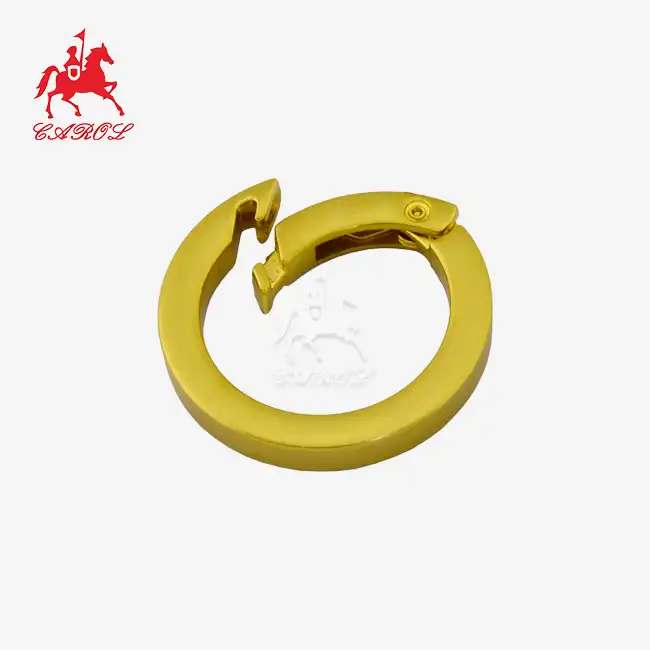
Lobster Clasps: Robust and User-Friendly Design
Lobster clasps get their name from their claw-like shape, featuring a spring-loaded lever that controls the opening and closing of the “claw.” To use, users squeeze the lever to open the claw, latch it onto a jump ring, loop, or D-ring, and release the lever to lock it in place. This dual-locking mechanism (the claw's shape plus the spring tension) sets it apart from spring rings in terms of security.
- Strength and Load Capacity: Lobster clasps are inherently more robust, with standard designs supporting 5–10 kg, well above the range of most spring rings. Reinforced, industrial-grade clasps can handle up to 50 kg, making them suitable for heavy-duty applications like tool belts or laptop bag straps.
- Key Advantages:
- Exceptional security: The claw's shape prevents accidental detachment, even under moderate tension, making it ideal for high-value or weight-bearing accessories (e.g., work ID Card Hooks with access cards or Bags carrying personal items).
- One-handed operation: Squeezing the lever is intuitive and requires less precision than spring ring clasps, making them easier to use for all users,including those with limited hand mobility.
- Aesthetic versatility: They are available in a wide range of finishes (e.g., matt gold, gunmetal, brass, sterling silver) and styles (including swivel variants), making them a popular choice for Leathercraft and high-end accessories where functionality and visual appeal must coexist.
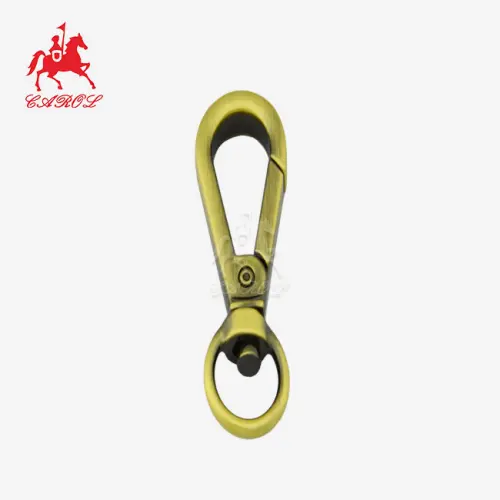
Best Use Cases: Matching Clasps to Project Needs
No single clasp is universally superior; each excels in distinct scenarios based on factors like load weight, frequency of use, aesthetic goals, and budget. By aligning the clasp's strengths with your project's requirements, you can ensure optimal performance and user satisfaction.
Spring Ring Clasps Excel In Lightweight, Aesthetic-Focused Projects
Spring ring clasps shine when the priority is minimalism, affordability, or light-duty use. Their small size and low cost make them a practical choice for projects where heavy loads or maximum security are not concerns.
- Key Chains and ID Card Hooks (Light Loads): For Key Chains holding just a few keys or thin ID straps (e.g., a student ID lanyard), spring rings are more than sufficient. Their compact size keeps the accessory from feeling bulky in a pocket or bag.
- Delicate Leathercraft: Thin leather bracelets, narrow belts, or small leather pouches benefit from the spring ring's low profile. It complements the accessory's subtle design without drawing attention away from the leather's texture or finish.
- Cost-Sensitive Production: For mass-produced items like promotional Key Chains or budget-friendly accessories, spring rings' low cost helps keep production expenses in check,without compromising basic functionality for light use.
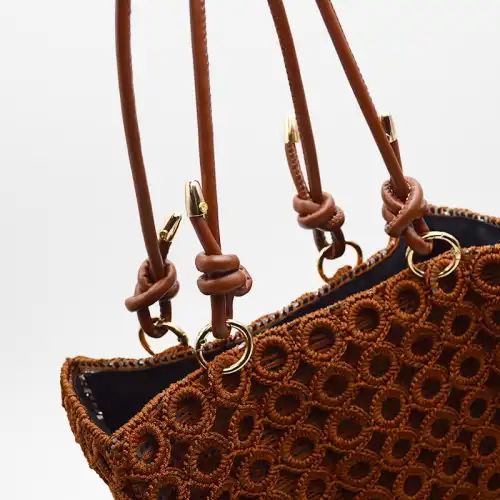
Lobster Clasps Excel In Heavy-Duty, Security-Critical Applications
Lobster clasps are the top choice when the project demands durability, security, or ease of use, especially for items that carry weight, hold valuable contents, or require frequent opening and closing.
- Bags, Straps, and Belting (Heavy Loads): Laptop bags, gym bags, tool belts, and wide leather belts all benefit from lobster clasps' high load capacity. The clasp’s security ensures that straps stay attached even when the bag is full (e.g., a laptop bag weighing 3–5 kg) or the belt is under tension (e.g., a tool belt with pliers and screwdrivers).
- Leathercraft (Style + Function): Swivel lobster clasps are a favorite in leatherworking for attaching straps to bags, wallets, or messenger bags. The swivel feature prevents the strap from twisting, while finishes like brass or gunmetal complement the leather's natural tone, blending practicality with a premium look.
- Key Chains and ID Card Hooks (High Security): For work ID Card Hooks with access cards (critical for building entry) or Key Chains holding keys to vehicles or valuable equipment, lobster clasps' resistance to accidental opening provides peace of mind. Users can also attach or remove keys one-handed, which is convenient for busy professionals.
-
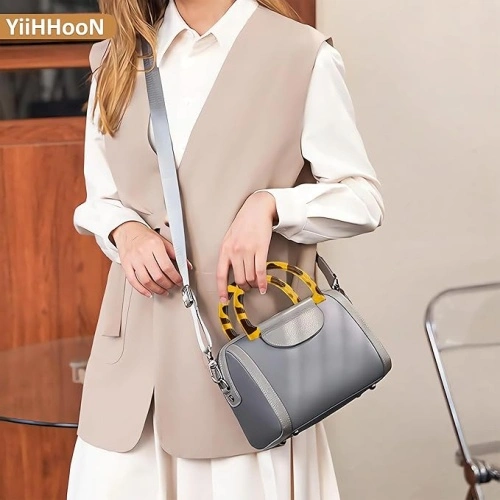
Durability and Longevity: Maximizing Clasp Lifespan
The lifespan of a clasp depends on its material, design, and how it’s used. Both spring ring and lobster clasps can last for years with proper selection and maintenance, but their inherent vulnerabilities require different considerations to avoid premature failure.
Spring Ring Clasps: Addressing Spring Fatigue and Corrosion
Spring ring clasps are most prone to failure due to two issues: spring fatigue and corrosion. Understanding these vulnerabilities and how to mitigate them can extend the clasp's lifespan significantly.
- Primary Vulnerability: Spring Fatigue: The spring inside a spring ring is under constant tension when closed. Frequent opening and closing (e.g., a Key Chain used 10+ times a day) or overloading (e.g., hanging a 10 kg bag from a 5 kg-rated clasp) causes the spring to lose elasticity over time. Eventually, the spring may no longer close the ring fully, leading to accidental openings.
- Secondary Vulnerability: Corrosion: Low-quality spring rings made from base metals (e.g., iron) are prone to rusting when exposed to moisture (e.g., rain, sweat). Corrosion weakens the metal and can seize the spring, making the clasp impossible to open or close.
Lobster Clasps: Protecting Against Tarnishing and Tension Loss
Lobster clasps are more durable than spring rings, but they are not immune to wear. Their main concerns are tarnishing (for decorative finishes) and gradual tension loss in the spring.
- Primary Strength: Structural Durability: High-quality lobster clasps made from solid brass, stainless steel, or zinc alloy (like the 20mm inner width square lobster clasp swivel trigger clip hook) distribute stress evenly across the claw and spring. This design prevents deformation, even under regular heavy use—many can last 5+ years without issues.
- Primary Vulnerability: Tarnishing: Decorative finishes (e.g., matt gold, gunmetal) can tarnish when exposed to harsh chemicals (e.g., perfume, lotion, saltwater) or prolonged moisture. Tarnishing affects the clasp’s appearance but not its functionality, but it can reduce the accessory’s aesthetic value.
- Secondary Vulnerability: Spring Tension Loss: While less common than in spring rings, the spring in a lobster clasp can lose tension over decades of heavy use. This is most likely in industrial settings where the clasp is loaded to its maximum capacity daily.
Carol: Hardware Accessories And Metal Frames For Handbags Supplier
Carol, as a professional factory specializing in hardware accessories and metal frames for handbags, leather goods, and luggage, brings years of experience in product manufacturing, sales, and design to their lobster clasps. Their knowledge makes sure that every clasp is not only strong and safe, but also easy to use in a variety of situations.
One of Carol's biggest strengths is that they have their own electroplating plant, which lets them offer a full range of services from design to packaging. This vertical integration lets them have more control over quality and more customization choices, so each lobster clasp can be made to fit the needs of each client.
Carol's lobster clasps are not just about functionality; they also prioritize environmental friendliness and safety. The clasps are made of eco-friendly materials, which is in line with the growing demand for sustainable products. The focus on safety also means that they may be used for a wide range of things, including children's accessories.
For businesses looking to elevate their products with high-quality hardware, Carol offers OEM/ODM brand processing. This service allows companies to benefit from Carol's expertise while maintaining their unique brand identity. The company's accolades and certifications further underscore their commitment to quality and innovation in the field of metal accessories.
Contact Carol today at tony@carolxiao.com to explore their range of customizable options.
References
- Leathercraft Association of America. (2023). Guide to Hardware Selection for Leather Accessories.
- Industrial Hardware Manufacturers Association. (2022). Load Capacity Standards for Accessory Clasps. Technical Report No. IHM-2022-04.
- Smith, J. (2021). Choosing the Right Clasp: A Practical Guide for Crafters and Designers. Craft & Design Journal, 18(3), 45–58.
- Global Bag & Accessory Council. (2023). Durability Testing of Bag Hardware: Spring Ring vs. Lobster Clasps. Research Brief No. GBAC-2023-07.
- Jones, L. (2020). Metal Finishes for Accessories: Care and Longevity. Industrial Design Quarterly, 22(2), 78–91.
- Zinc Alloy Hardware Consortium. (2022). Performance Metrics for Zinc Alloy Clasps in Leathercraft and Bag Making. Retrieved from
_1753256285958.png)

_1754990596544.webp)
